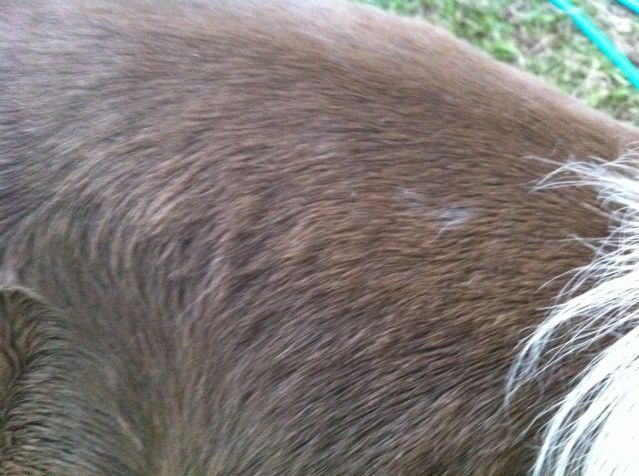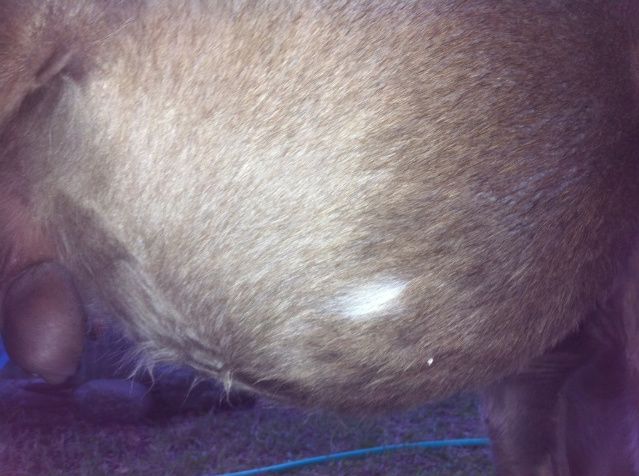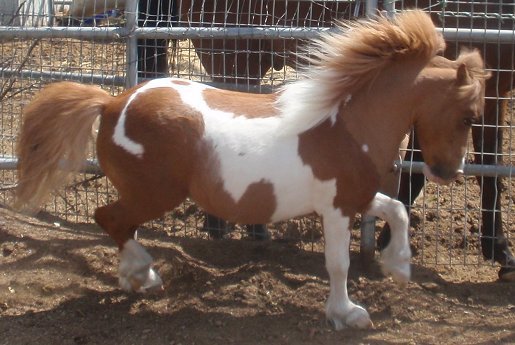Oh, my! THIS again!
To the OP...the belly spot *could* be a sign of minimal pinto. I don't know about birdcatcher spots; never have heard that they would occur under the belly? I have personally had several miniatures that likely carry sabino(some manifest, some presumed by knowing their parentage)have small white areas, esp. 'roany', 'show up' as they aged. PtHA did have some specific 'square inches of color' requirements before you could show a horse in color as a pinto; not sure if the mini breed rules are at all specific about what constitutes 'enough' to show in Multicolor? I do think white spots would need to be at least visible from the judge's standing position...?
As Tony said(and well; thank you, Tony!!)...the 'generic', non-capitalized, if you will, terms 'pinto' and 'paint', historically, AND can still, refer to EXACTLY the same thing...that is, certain spotting patterns on horses. Yes, the American PAINT Horse Assoc.(APHA)was created in order to register such spotted horses(because 'back then' such horses were rejected by the AQHA BASED ON that spotting!) that were of 'only'of stock horse type--i.e.,basically only QH and TB breeding...bloodlines were first, 'pattern' more secondary.(Oversimplified, but basically how it was.)
The PINTO Horse Assn. of America(PtHA), OTOH, began as being 'more about' the color pattern itself, and accepted about EVERY 'type', though they eventually declared several specific types, to include Hunter, Pleasure, and Stock(there are now more, plus pony designations...I just don't immediately recall them all)...'pattern' was first, bloodlines/type more secondary.(see above)
There is an irony in this...I am not 'involved' in either APHA or PtHA as I once and for years, was, but understand that things have changed. SOME horses of the specified spotting patterns, once rejected by AQHA, must now be accepted for full registry there(as long as both parents were/are duly registered in AQHA)...lawsuits dictated, no more rejecting horses whose parents are fully-qualified AQHA on the basis of their coat color/pattern, as I understand it...and PtHA, who once had very stringent 'square inch of white', and 'pink skin underneath', and 'placement on the horse...IOW, 'visible color'requirements... has now greatly relaxed those requirements, so I hear. Of course, we all know that there is no bad color on a good horse, don't we? Personally, having been involved w/ AQHA since the early '50s, I ALWAYS thought they were foolish to reject otherwise qualified pinto/paints!
I realize that many who haven't been around for as long in the history of the registries I've mentioned as I have may not be familiar with background from before they existed, and so believe that it is 'only about' the 'color/pattern-based' registries mentioned, but it is STILL absolutely correct historically, when referring to the fact that ANY equine has a certain kind of coat spotting pattern, to refer to that equine as a 'pinto' OR a 'paint'--so don't be made to feel foolish for doing so.
Piebald/skewbald are terms still apparently in use overseas; not so much over on this side of the Atlantic...at least not in my part of North America.
Margo - who bred my first REGISTERED QH in '55, owned an unregistered, but would-have-been-eligible for-BOTH-the-color-registries-mentioned, paint mare by around the same year, and my first REGISTERED Pinto/Paint gelding in the early '70s. The first AMHA miniature I trained and breed-showed(to be an AMHA Champion)was a paint/pinto gelding...and I referred to him properly w/ EITHER term.











